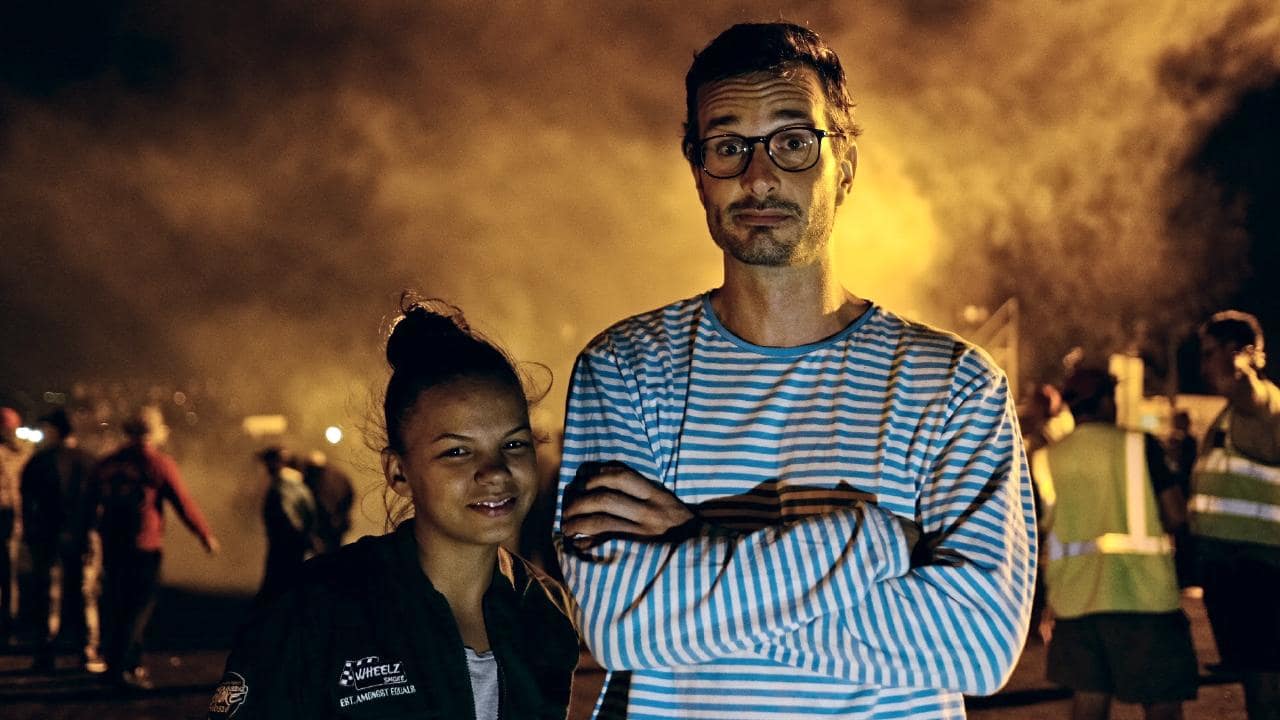Dark Tourist Is More Than Just Another Travel Show
New Zealand journalist and filmmaker David Farrier decided to bring the world’s most popular “dark tourism” sites to a Netflix audience. He probably didn’t anticipate the grim backlash from critics such as The Atlantic, which accused him of selling a “superficial kind of thrill seeking.”
But what if those quibbling journalists were actually equally guilty of Farrier’s hollowness? It should come as no surprise that most journalists have no grasp of the nature of economics: human action.
Perhaps accidentally, that’s exactly what Farrier helps to explain with his eight-episode series. When it comes to individuals and what moves them, no matter how superficial it may seem, it is beyond our comprehension, and therefore, impossible to control.
‘Dark Tourist’ and Free Markets
Dedicating just about 10 minutes of each episode to each unconventional location, Farrier doesn’t pretend to go deep into any of the experiences he’s documenting (as critics repeatedly point out, explaining how “bad” that is supposed to be.)
Instead, the host seems content by simply learning that someone out there is visiting an eerie forest where people go to commit suicide, or even praising the saint of death just for fun.
His approach to some of the most unlikely tourist destinations, such as a replica of Noah’s Ark in Kentucky or a military-run shooting range in Cambodia where tourists can use rocket launchers to kill animals, is to ask simple questions, show the viewer a sample of what happens in these locations as he takes part in it, and then move on – often sharing with the audience that some of these experiences remind him “of just how good I’ve got it back home.”
Even when he plays an undocumented immigrant crossing the U.S.-Mexico border in a faithful recreation of what real immigrants experience, he still manages to act almost detached, as if both amused and annoyed but never deeply involved. In the end, he tells the audience: “At times it was entertaining …but in the end I got the message. For real migrants this is never fun.”
How he felt or what that experience is meant to evoke in the tourists who take part in them is not the subject of the series. Instead, Farrier acts as a real consumer of tourism by visiting places and getting to know certain locations without allowing the experience itself to fundamentally change their approach.
Dark tourism to him doesn’t manifest itself as a delectable experience, but as a consumer good. Perhaps even an odd one that reeks of stale pickles, but still a solid alternative option.
What Farrier proves with “Dark Tourist” is that for every version of Anthony Bourdain’s “No Reservation,” where the host connects with the locals and draws profound lessons from their way of living, there’s a tourist who just wants to get skin-deep into the next attraction, just so he can then move on to the next, and the next, etc. And unlike many critics of “Dark Tourist” may suggest, there’s nothing wrong with that.
In a day and age when people are quick to dismiss the mass of consumers as fools, we find an ever-growing market for emotions, with marketing gurus explaining that emotional connections should always come first. But sometimes, the hook isn’t a deep or meaningful one. Sometimes, all we want is a single-serving pastime.
As it should be in any free market, options will be available to all, whether the consumer is into a widely popular theme or not. And in “Dark Tourist,” nothing is popular nor grand, it just is. Unassuming, weird, and somewhat exotic, but never more than a sideshow.
Going Where Most People Won’t Go
One of the most groundbreaking qualities of mass entertainment tools such as Netflix, the home of “Dark Tourist,” is that it gives the audience choices. And not just because it offers a wide variety of genres, but because it helps people connect to parts of the world that may sound, at first, a bit hard on the eye (and the stomach).
When Farrier visits Medellín, Colombia, to explore the booming Pablo Escobar tours taking place in the infamous drug lord’s hometown, he watches in both awe and horror as Escobar’s favorite assassin replays a murder scene he wrote.
It’s hard to feel compassion for the assassin, especially as he gives the host a tour of the private prison Escobar built for himself. It’s also hard to empathize with the cop who claims he survived the Escobar years because he was corrupt. And yet, the viewer learns something new about these very real people: That to some folks out there, making a living sometimes implies doing things we would never even consider. And just like that, we can go back to our lives, feeling a bit awkward, perhaps, but somehow even more convinced we’re not that bad after all. And that’s only thanks to the fact Farrier could freely visit these locations, and because Netflix distributed the product to its users for dirt cheap.
Now, we have entertainment options because we’re both free to listen to these individuals and because Netflix offers filmmakers like Farrier a platform. Sometimes, the places and people “Dark Tourist” depicts may not seem like the logical choice, but then again, when you have so much freedom to explore, why not go with something off-beat?
What “Dark Tourist” teaches us is that in a world where loud voices bemoan capitalism while enjoying its fruits, being a consumer is the ultimate expression of freedom. And whereas tastes come in various shapes and sizes, freedom is what it is: It can’t be trimmed or distorted.
The freedom that Netflix provides and the lesson in human action “Dark Tourist” teaches are, for a lack of a better term, genuine, whether you think the show isn’t deep enough or not. But the fact we can talk about the show’s strong or weak points in itself is exactly why we should be celebrating the revolutionary times we live in, when entertainment markets expanded in such a way that mass, quality, and sometimes simple entertainment such as “Dark Tourist” is available to most of the world for a few bucks each month.
If only we could allow the same freedom to flourish in other markets, Farrier would have to dig harder and deeper to find a remote enough location where doctors would be willing to inject him with ketamine to treat a simple hand wound.











